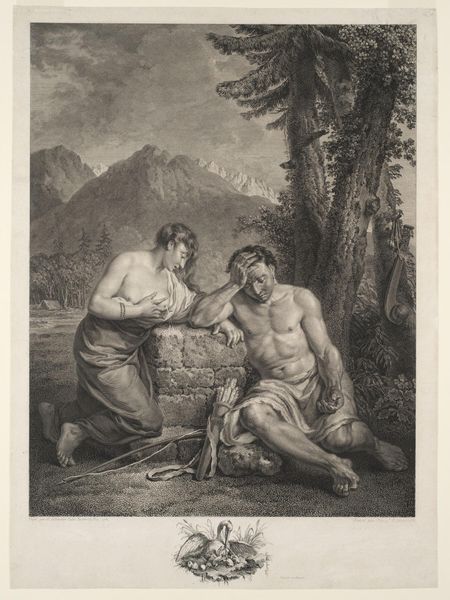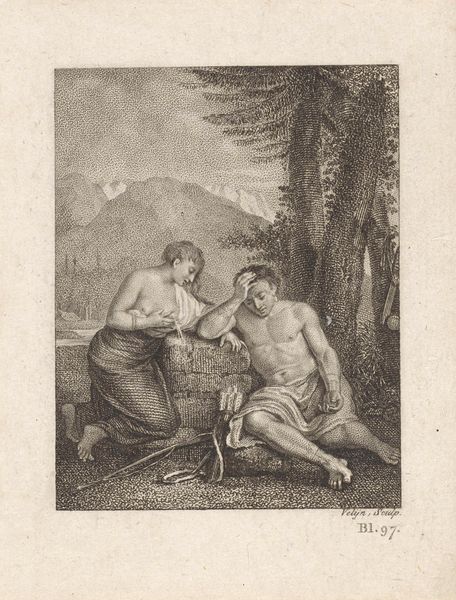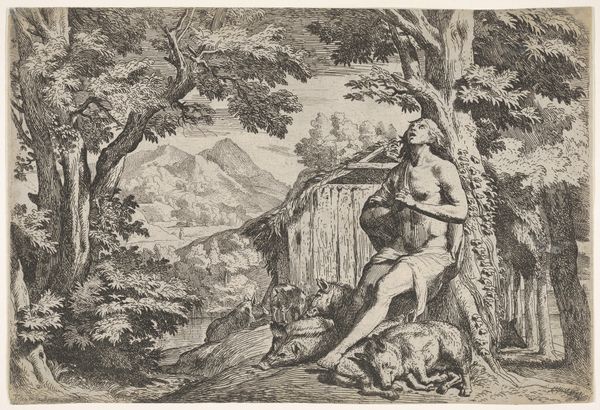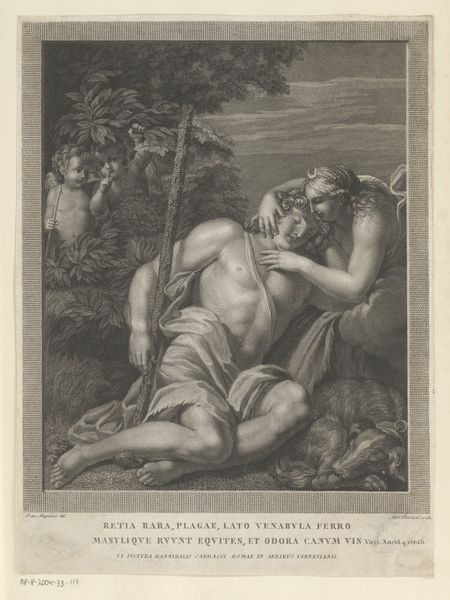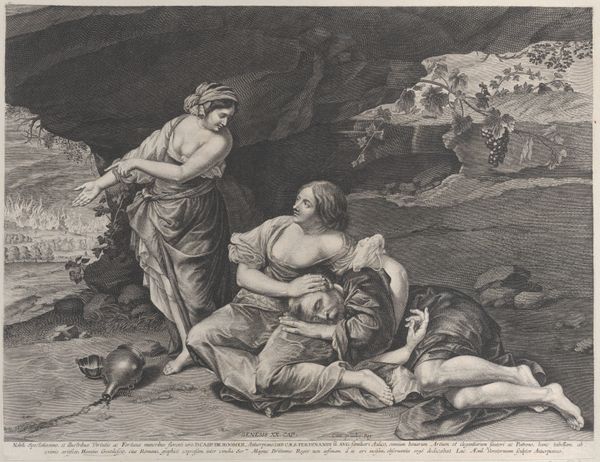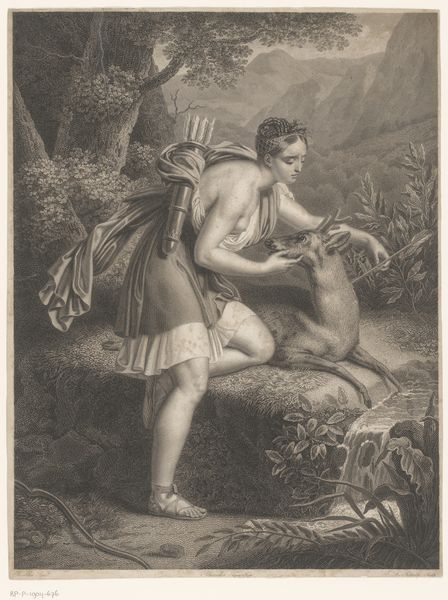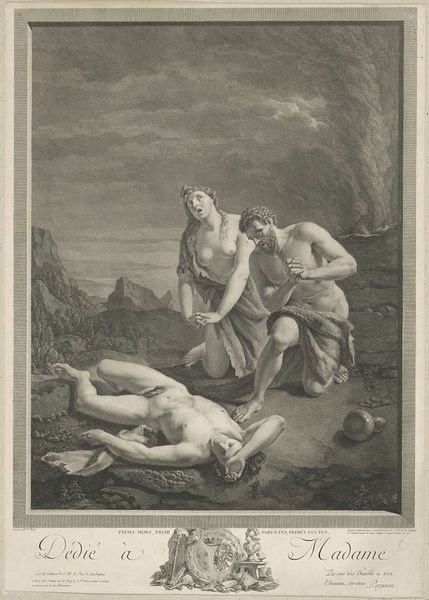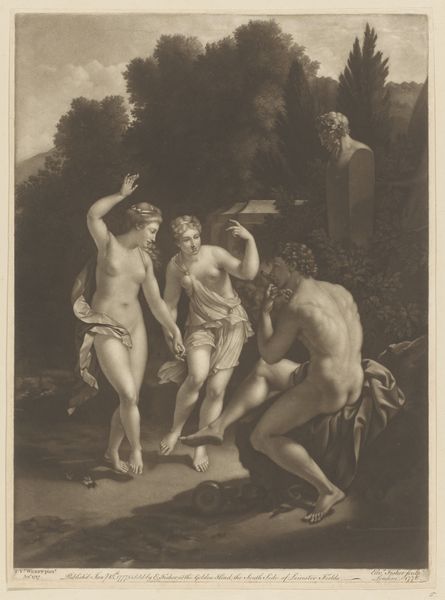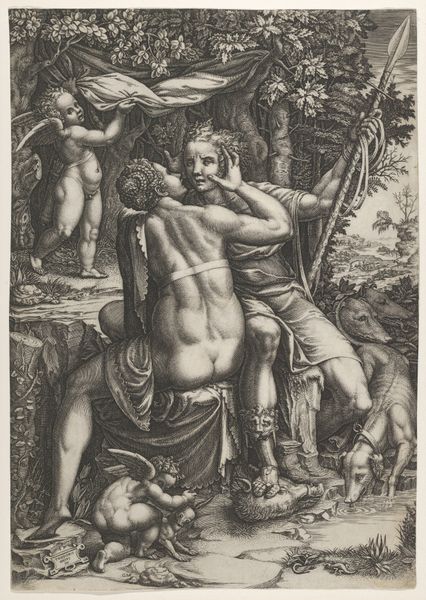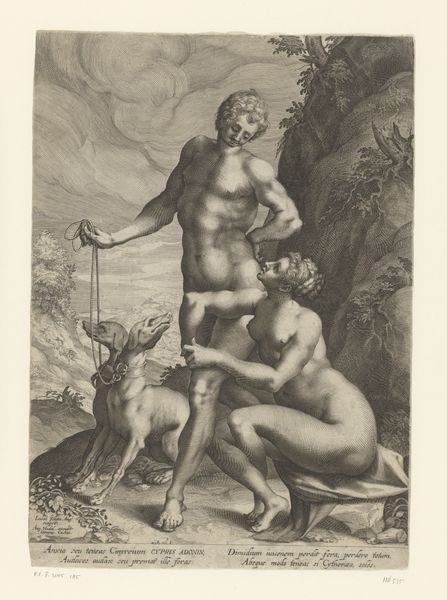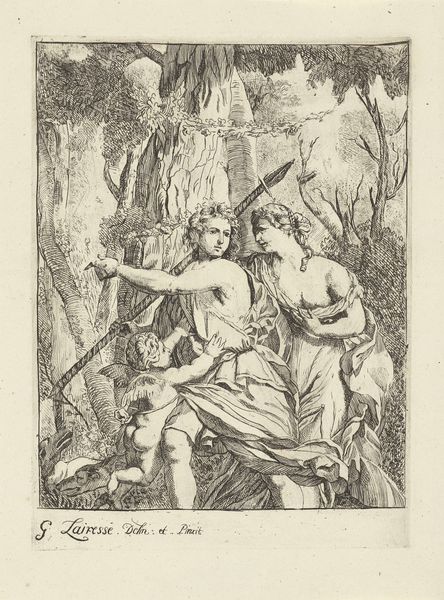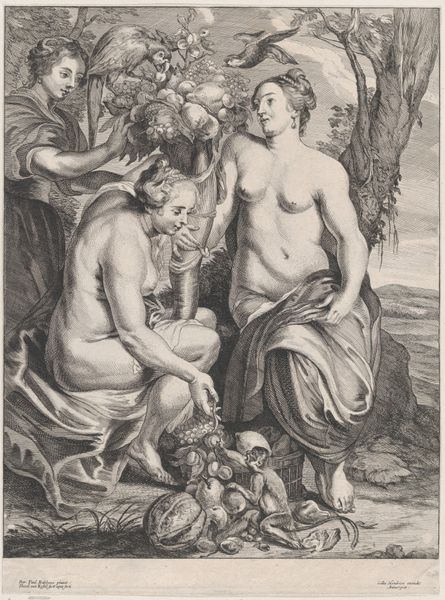
Dimensions: height 530 mm, width 370 mm
Copyright: Rijks Museum: Open Domain
Editor: So, here we have "Canadees paar bij het graf van hun kind," or "Canadian Couple at the Grave of Their Child," an engraving from 1786 by François Robert Ingouf, currently at the Rijksmuseum. I'm struck by the stark contrast between the idealized figures and the raw grief they display. It’s almost theatrical. What do you make of this, considering the historical context? Curator: It's important to understand how Indigenous peoples were portrayed in European art at the time. This piece clearly romanticizes the idea of the "noble savage," fitting into a broader colonial narrative. Look at their idealized forms – they're presented as paragons of natural humanity. Editor: That's a great point. I was focused on their grief, but the composition does feel very staged. How much did European biases shape these portrayals? Curator: Enormously. Artists rarely had firsthand experience with Indigenous cultures. They relied on secondhand accounts and often projected European values onto their subjects. This image presents a specific kind of "Indian" – one deemed sympathetic because they're mourning within a recognizable European emotional framework. The presence of the grave itself reinforces a concept of ordered mourning and possession of land that might not align with Indigenous traditions. Editor: So, it's less about documenting reality and more about creating an image that resonated with European sensibilities about grief, loss, and even colonization? Curator: Precisely. The tragedy of losing a child is universal, but framing it within this particular setting serves a socio-political purpose, justifying European expansion and domination through narratives of empathy and cultural superiority. Do you notice the way the artist presents them almost as Adam and Eve in mourning? Editor: Wow, I see that now! So it uses those biblical allusions to, in a way, ‘civilize’ them, to make them more relatable, right? This has completely changed my view of this print. Thanks! Curator: It is in understanding such nuanced manipulations and interpretations that a seemingly sentimental piece of art becomes a profound tool in analyzing historical and cultural forces.
Comments
No comments
Be the first to comment and join the conversation on the ultimate creative platform.
